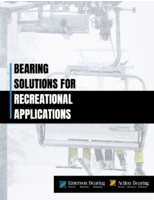Bird Repellent uses odor to reduce nesting and roosting.
Press Release Summary:

Food-grade, biodegradable BirdShield(TM) can be sprayed on interior and exterior structures and directly on nests. When liquid dries, product leaves residue with grape-like odor that irritates birds' trigeminal system. Harmless product uses Methyl Anthranilate as active ingredient. Users can paint or spray product on porous, non-porous, or sealed surfaces. Prolonged repellency is greatest on porous surfaces, at up to 10 days or more.
Original Press Release:
BirdShield's Odor Repels Birds from any Structure, Surface, Nest or Boat Dock
Harmless, Silent, Invisible, No Electricity BirdShield(TM) is a food-grade, biodegradable bird repellent that reduces bird nesting and roosting on structures, roofs, interior or exterior walls, siding, statues, bridges, beams, boat docks and marinas. It can even be sprayed directly on nests. Liquid BirdShield dries, leaving a residue with a 'grape-like' odor. This odor irritates birds' trigeminal system, similar to our sense of smell, yet it is environmentally friendly and harmless. It is effective against sparrows, starlings, pigeons, barn swallows, gulls, water birds, woodpeckers, predators and more. BirdShield was developed and tested with assistance from a major university and the USDA. The active ingredient, Methyl Anthranilate (MA), is a constituent of Concord grapes and has been used by the food and drug industry for over 40 years to flavor candy, sodas, gums, and drugs. The US FDA lists it "Generally Recognized As Safe" (GRAS); the US EPA terms it a "reduced risk" ingredient. Paint (full strength) or spray (mixed with an equal quantity of water) BirdShield on porous, non-porous or sealed surfaces. Coverage area is greatest on non-porous or sealed surfaces; prolonged repellency is greatest on porous surfaces (up to 10 days or more). One-gallon containers are available immediately for $95.00 Application Details: Apply BirdShield by painting (full strength) or spraying (1 part BirdShield to 1 part water). Coverage area is greatest on non-porous or sealed surfaces, where a very small amount will cover a large area - application should be light as excess will run off. Prolonged repellency is greatest on porous surfaces (up to 10 days or more) - application should be liberal as BirdShield will be absorbed. BirdShield is effective on all surfaces, but it is recommended to test and/or seal certain materials (many waxes, plastics, foams, insulations and glues) and finishes to avoid potential staining or damage. Note: Once birds have been trained to avoid the area (usually after a few treatments), continuous application is not necessary. Photos, further documentation and related pertinent information are available upon request. One Study's Notes: Original tests were done in five commercial buildings in Lewiston, Idaho. All had been built between 1880 and 1920, and pigeons had been roosting in them as long as anyone could remember. Prior attempts had been made to remove the pigeons by trapping and scaring with noise, balloons, and plastic owls. None of these attempts were successful for any reasonable period of time. During these tests, three buildings were treated with a 50% mixture of BirdShield(TM) and water applied to roosting areas with a hand pump sprayer. On the other two buildings, a similar treatment was made with water only, for comparison. Immediately before the tests, one day, three days, and thirty days after, objective tests of the bird use were made. The number of birds that perched in an area for more than 30 seconds was counted for each building. In the buildings treated with water only, this number did not change significantly over the life of the study. In stark contrast, there was no reportable bird activity observed at the treated buildings. Similar results have been observed for starlings, sparrows, and woodpeckers in other test environments; however it was sometimes necessary to re-treat two or three times in order to obtain complete control.




